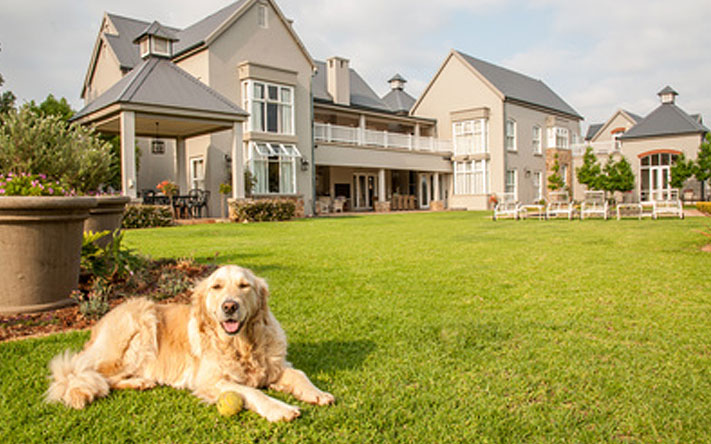As water restrictions tighten, many L.A. dog lovers are faced with the challenge of how to keep yards friendly for Fido while getting rid of water-guzzling grass.
Driving around the neighborhood, it’s easy to see more and more houses with gravel “lawns” or plots of spiny succulents.
But gravel can get between sensitive paws. Ersatz grass can get hot in the sun. Dirt makes for a dusty dog who leaves his mark on carpets and furniture. What’s a dog lover to do?
A lot, according to Cassy Aoyagi, president of FormLA Landscaping, which specializes in waterwise garden and yard designs. Her website has a number of resources about substitutes for water-guzzling plants and lawn as well as pet-safe plants.
How to make your water-wise yard pet-friendly
Here are some tips distilled from her website and other sources:
- Think dog-friendly surfaces. If you’re getting rid of turf, look at creating paths for the dog to run on covered in decomposed granite. This is the sandy, dirt-like covering found in many dog parks.
- Existing dog paths may offer an organic landscaping plan. If you design paths along Fido’s favorite routes through the yard, you’ll have a happy dog. You’ll have an organically winding path through your yard that makes it easy to build areas planted with waterwise or California native plants.
- Investigate artificial turf. If you like the look of lawn — but not the Department of Water and Power (DWP) price tag — check out faux grass. While some can be hot to the touch on sunny days, other brands have been used in dog parks in the south. XGrass Pet Grass claims to be 17.5º F cooler than its competitors as well as easy to clean. EasyTurf is one brand that trainer Cesar Millan endorses. Artificial turn has the benefits of draining well, not needing weed-killers or pesticides that might harm Fido and being cleanable and low maintenance.
- Check out alternatives to grass. Using drought-resistant substitutes (like carex pansa) instead of traditional grasses can give Fido a soft surface to run and play on without breaking the bank to maintain. According to Aoyagi, carex pansa is a species of sedge that looks like a typical lawn but uses 70 percent less water and doesn’t need chemical fertilizers or pesticides. The FormLA website has a number of alternate plant recommendations for lawns.
- Don’t forget shade. Creating a water-frugal garden sometimes means removing shade-producing shrubs and trees. This is the perfect time to rethink the traditional dog house. It doesn’t have to look like a 1950s tract house anymore. Etsy is one place you can check for the unique dog house to suit your garden.
- Watch the mulch. Heavy mulch helps hold the moisture in the soil close to plant roots and deposits nutrients as it decays. Avoid cocoa mulch. Made of cocoa bean shells, it has a sweet smell that attracts dogs — and all the toxic qualities of chocolate.
- Select plants with care. When you select a plant to save water, take the time to check whether it is safe for pets, too. For example, aloe vera is becoming increasingly popular because it doesn’t need a lot of water and produces colorful spikes of flowers. But it contains saponins and may cause vomiting, diarrhea, loss of appetite, depression and tremors. Water-wise plants like bottlebrush and succulents like chicken-and-hens and pencil cactus can also be dangerous for dogs. The ASPCA has an extensive list of pet-hostile plants.
Think dog, while you think about saving water. One excellent source of information about California-native and waterwise plants is the Theodore Payne Foundation, which also happens to welcome dogs while you shop.
Landscaping that is pet-friendly and waterwise can benefit every member of the family.
